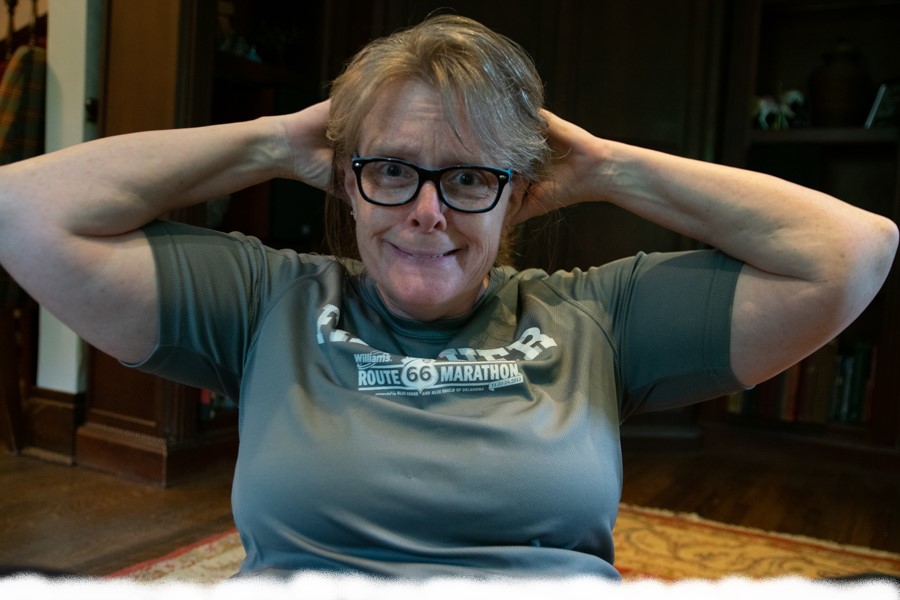Squishy Time, Revisited

15 May2020 | Themes: Reflections/Time | 7-Minute Read | Listen
Last July, I wrote, “I like to think of Time as ‘squishy’—it expands and contracts according to laws of physics incomprehensible to humans. It’s sort of like that gooey foam that you spray into cracks and crevices, spreading out to fill the void, but staying small if there’s no space for it to grow.” In light of the pandemic, I want to revisit the concept of Squishy Time.
Just the other day, I spoke of how everything seems so much squishier now, to which my friend replied, “Yeah. It’s like March was five years ago, and also yesterday.” People post on social media, “What day is this?” and receive replies like, “April?” or “Jammie-day—no, wait! That was yesterday…and the day before…”
Adrift on the Sea of Indeterminate Time
If you’re feeling adrift on the Sea of Indeterminate Time, you’re in good company. For me, it’s a feeling of being busy every day, but getting to the end of the day and wondering exactly what I accomplished. There’s so much that I need to do and could be doing, but I feel unable to get it done. Yet I’m not sitting around watching Netflix, or even taking advantage of any of the wonderful content that’s being offered by museums, opera and ballet companies, the symphony, and more. Where has the time gone?
If you feel like that, too, it’s OK. You’re normal! But everything around you is NOT normal. Elissa Epel, professor of psychiatry at the University of California, San Francisco, said in Harmeet Kaur’s article, “It is a perfect storm between changes in environment, loss of social anchors and increases in cognitive stress” that can make it hard to concentrate, learn, and remember.
Our routines are pretty much shattered as the pandemic has forced us to alter the very way we move through the world. For those who have lost their jobs or who are working from home, the commute that used to demarcate the work day is gone. The old norm of going to certain places on specific days has shifted so that we work, learn, worship, and socialize from the same space, and that blurring of space is disorienting. Gone are the activities that used to distinguish between week day and weekend, and the things that we used to look forward to doing—our weekly rituals—have all but ceased.
Time is All in Our Minds—and Our Minds Are Stressed
So now we don’t have many of the external markers that used to aid us in our time orientation, and we are forced to look within. But that gets tricky, because Time, it turns out, really is “a big ball of wibbly-wobbly… timey-wimey… stuff.” (Doctor Who, “Blink”)
Our notion of time is a human construct, made up entirely in our minds. According to Robert Lanza of Wake Forest University, “Many scientists question whether time even exists. Indeed, Einstein’s theories of relativity suggest not only that there is no single special present but that all moments are equally real.” What makes Time appear to pass is our ability to remember events. But if memory is stressed, as in the current global situation, our minds can’t really hold on to a reliable concept of Time.
Inger Burnett-Zeigler, associate professor of psychiatry and behavioral sciences at Northwestern University, said in Kaur’s article that the chronic stress of the pandemic affects short-term memory, which alters the way we conceive of time. She added that stress worsens our quality of sleep, which “can further cognitive impairment, attention and concentration issues and short-term memory loss.”
Another theory of how stress affects our concept of time is based on a biological shift. According to Kevin LaBar, a psychologist and neuroscientist at Duke University, our internal clock may tick faster in times of stress, so that when we look back, the stressful period appears longer than it actually was (Nemo).
Add to this the reduced number of distractions available now. In our constrained environments, we aren’t getting as much mental stimulation, so our minds tend to keep retracing the same paths—what LaBar calls an “idling mode”—leading to worry and stress.
Finally, our interactions with others has shifted from 3 dimensions to 2, and that is stressful in a different way. Instead of being face to face, able to hug or shake hands, we are sitting in front of our screens, looking at our own faces and those of others, trying to read social cues such as body language and facial expression. It’s harder to tap into other people’s “vibe” on a screen than when we are in close physical proximity. If there are multiple people at the meeting, it’s difficult to attend to all the facial cues on the screen. “Zoom fatigue” is a very real mental health issue that adds to the collective feeling of disorientation.
Rest, Routine, and Real Life
The best solutions to time disorientation involve several key factors. First, try to get enough high-quality sleep, and try to do so at a consistent time. Go to bed at the same time each night, and get up to an alarm clock each morning. This will help to keep your biological clock somewhat in check.
Next, try to set up new routines that include some exercise, regular mealtimes with nutritious foods, and time outdoors. Talk with friends and family to set up a schedule for phone calls and Zoom get-togethers so that you all have that to anticipate. You can also structure your week to take care of certain tasks on specific days. Write it down. (Here, I interject that I set my little calendar notebook down on March 13 and found it again only two days ago. My days are a haze, but now I am writing down a schedule for my day and placing important things—like when bills are due—on the calendar. It feels good doing just that much. It’s oddly reassuring to have it written down.)
It’s also important to allow yourself to feel what you’re feeling, without judgement or criticism. Kindly and gently, get curious about your emotions: explore them, notice where they are in your body, describe them, and then let them go. After all, feelings just want to be felt—even the painful ones. Usually, feeling them fully is far less painful than exerting energy avoiding them or pushing them away. If you can, talk about your feelings with a trusted friend, preferably one who can listen without trying to “fix” anything. You can also journal, do artwork, or talk with a therapist. The important thing is to let yourself feel.
Finally, we can focus on that which gives us hope and pleasure. When we stay focused on news reports, we keep ourselves flooded with cortisol, which leads to anxiety, depression, sleep difficulty, and a host of other health issues. But shifting our focus can give our bodies and minds the break we need. So get out in nature (safely, of course). Do something creative. Play with your pet. Read something light and humorous. Get away from your screens and experience life in 3D. Turn up the radio and dance.
So here we are, doing the Time Warp. I hope you, Dear Reader, are coping. Know that any disorientation you may feel is normal in these unprecedentedly abnormal times, so take care of yourself. May you be well.
Until next time,

Resources:
Kaur, Harmeet. “The Pandemic Is Messing with Our Sense of Time.” CNN, 28 April 2020. https://www.cnn.com/2020/04/28/health/what-day-is-it-pandemic-wellness-trnd/index.html
Lanza, Robert. “The Arrow of Time? It’s All in Our Heads.” Discover, 26 September 2016. https://www.discovermagazine.com/the-sciences/the-arrow-of-time-its-all-in-our-heads
Miller, Ryan W. “What is ‘Zoom Fatigue’? Here’s Why Video Calls Can Be So Exhausting.” USA Today, 29 April 2020. https://www.usatoday.com/story/news/nation/2020/04/23/zoom-fatigue-video-calls-coronavirus-can-make-us-tired-anxious/3010478001/
Nemo, Leslie. “How the Coronavirus Pandemic is Warping Our Sense of Time.” Discover, 1 May 2020. https://www.discovermagazine.com/mind/how-the-coronavirus-pandemic-is-warping-our-sense-of-time
Rollin, Jennifer. “3 Reasons to Let Yourself Feel Your Emotions.” Psychology Today, 25 November 2016. https://www.psychologytoday.com/us/blog/mindful-musings/201611/3-reasons-let-yourself-feel-your-emotions
If you enjoyed this article,
please share on social media!
NEXT ARTICLE

Body of Evidence, Revisited
21 May 2020 | Themes: Reflections/Body | 5-Minute Read
During these weeks of staying at home, I have, like millions of people, become more sedentary than I was before. Whereas I used to get out and ride my bicycle a few times per week and go on walks with friends, I’ve spent far more time than usual in front of a screen or at my sewing machine. I began to notice that when I’d get up and move across the room, I felt stiff and sluggish . . .
1 thought on “Squishy Time, Revisited”
Great article!